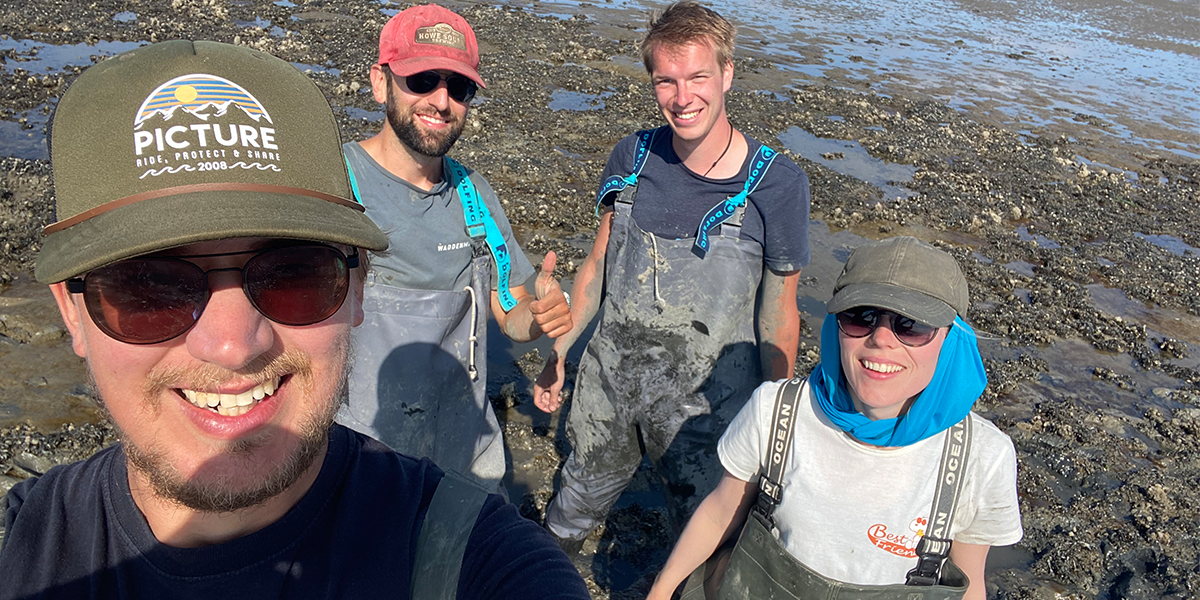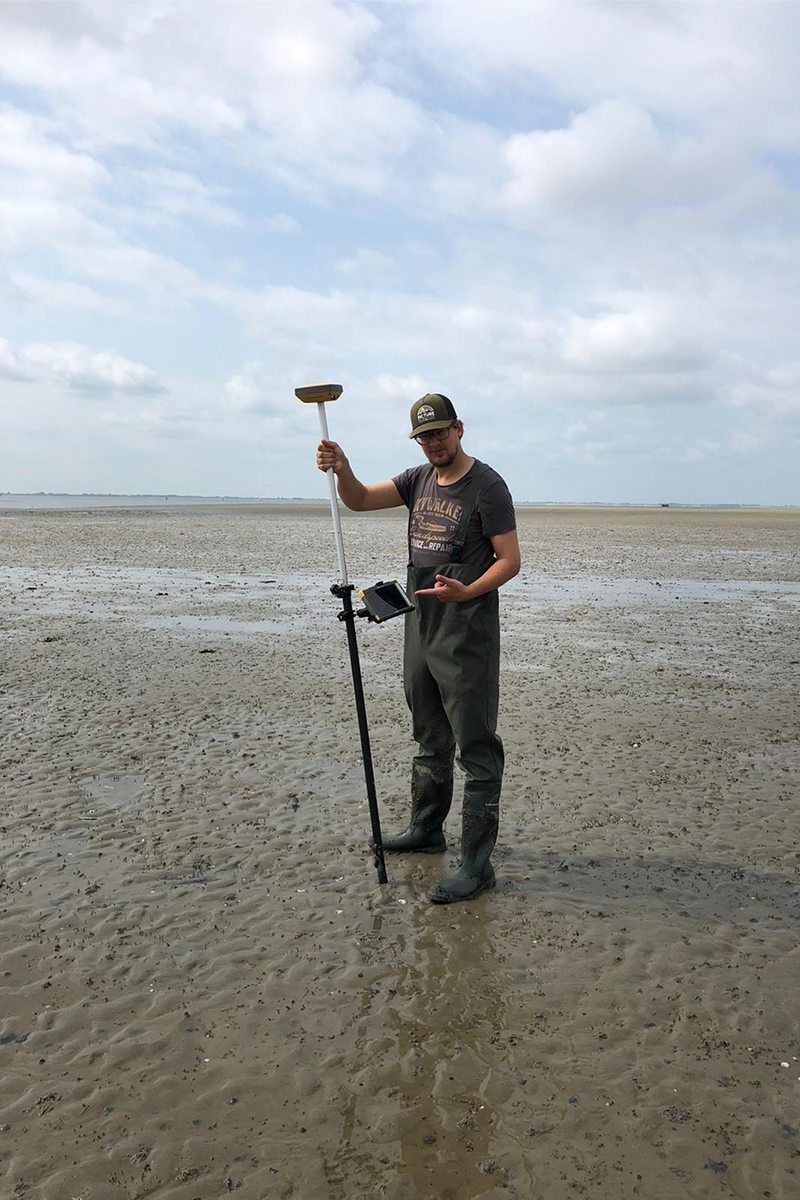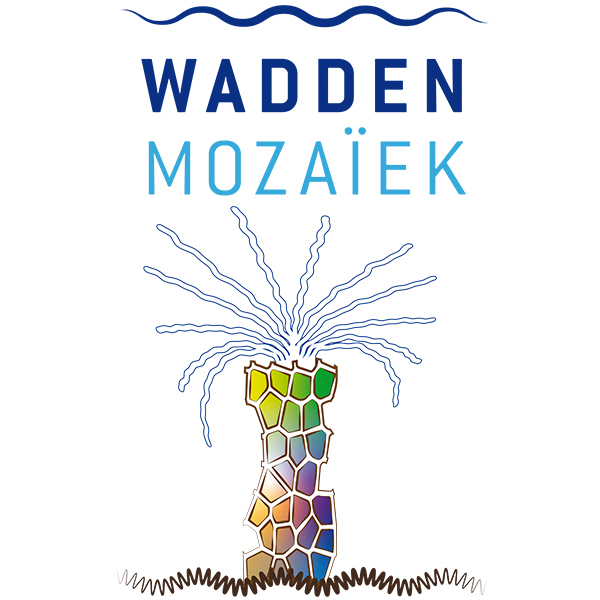20. July 2021
We have hit three reefs so far. Waiting until the tide is low enough to wade our way from the mainland towards the reef as they emerge from the receding water. The first reef, reef 555, was a so-called starter, as it was a nice and contained reef with close promixity to the shoreline. Pulling the waddenkart across the muck, we set up our gear and got to work. On the reefs on Texel, the tides played a large role in defining the tempo of the work, as we had to have everything done before the tide comes back. Here, on Schiermonnikoog, we usually have a bigger time-frame, as the elevation levels are different from Texel.
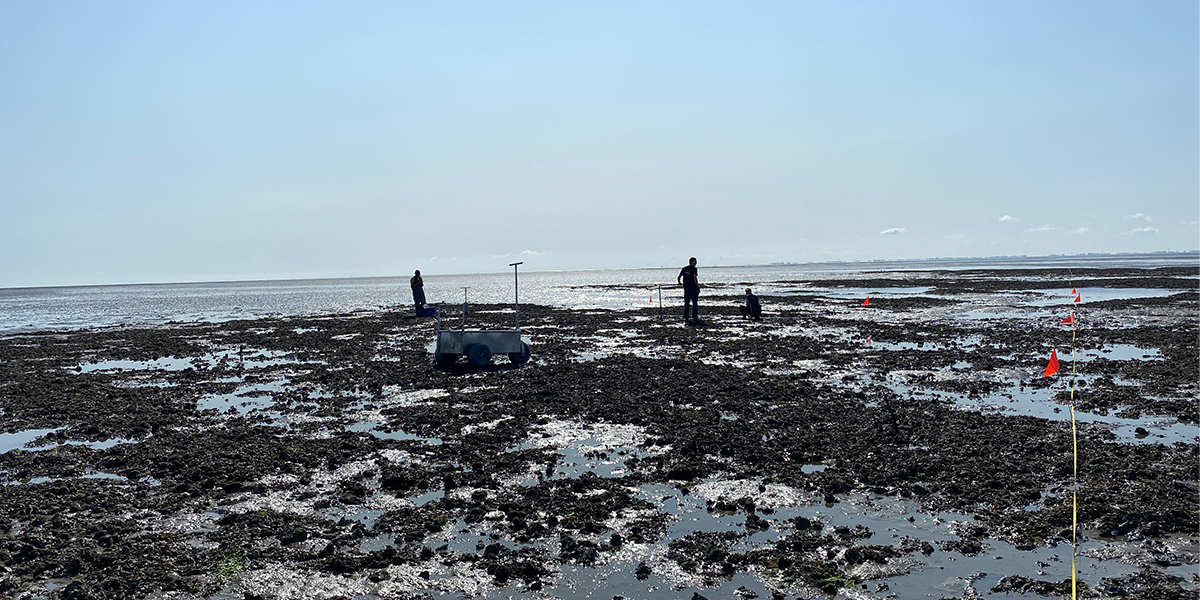
Here’s what we do on a given reef; we determine a centerpoint and draw four transect lines on right angles across the reef. These are the lines along which we collect our samples, where we do the height and gps measurements, take photo’s and determine the condition of the reef. My ‘job’ is doing parts of the gps-measurements. Carrying a big stick on which a pretty pricy device is attached I walk the transect lines and measure the height and location of the reef. After doing this routine for all the transect lines I usually end up walking the perimeter, carrying another gps-device and tracking the edges of the reef so that the surface area can be calculated.
Our second reef (Reef 534) was a bit further from shore, larger and all in all a more time-consuming one. We did get an extra team-member, getting our crew almost up to its full strength. As you can imagine, walking around on a reef does not provide a lot of shade, so we were not sad that the sun did not show itself until we were well on our way back. This reef would serve as a prelude to the reef we were going to hit next, Reef 580.
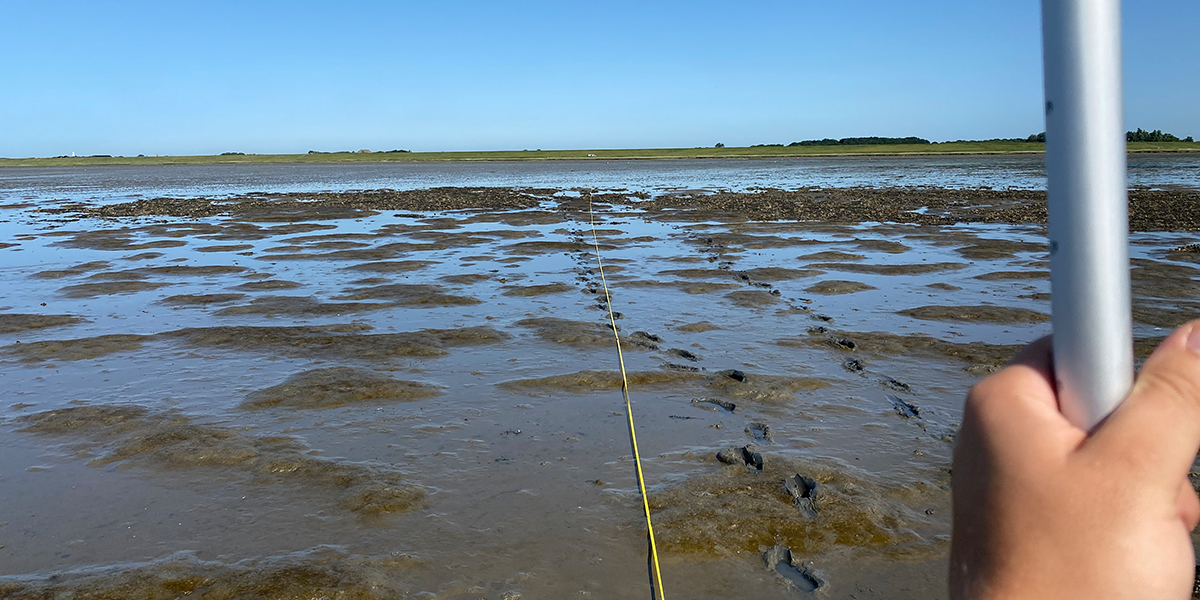
No reef is alike
With a team of five, we set out to what Jon called the hardest of the reefs for this week, Reef 580. He was not lying. Despite being a fascinating reef, with different types of structures, fauna and elevation levels, this reef was quite a handful. We had seen mucky reefs before, but this one was on a whole next level. We had to constantly keep moving so we would not get our boots stuck in the muck, every step sinking away in the smelly goop. It did, however, turn out to be a very interesting reef. When we compared the data collected on the reef to sattelite imagery from 2019, we could see that this reef did not exist then. At least, the outer edges were there, but the whole bulk of the reef, the mucky middle part, was not there two years ago. I am curious to see if the samples we took from this reef will also somehow show the youth of this reef.
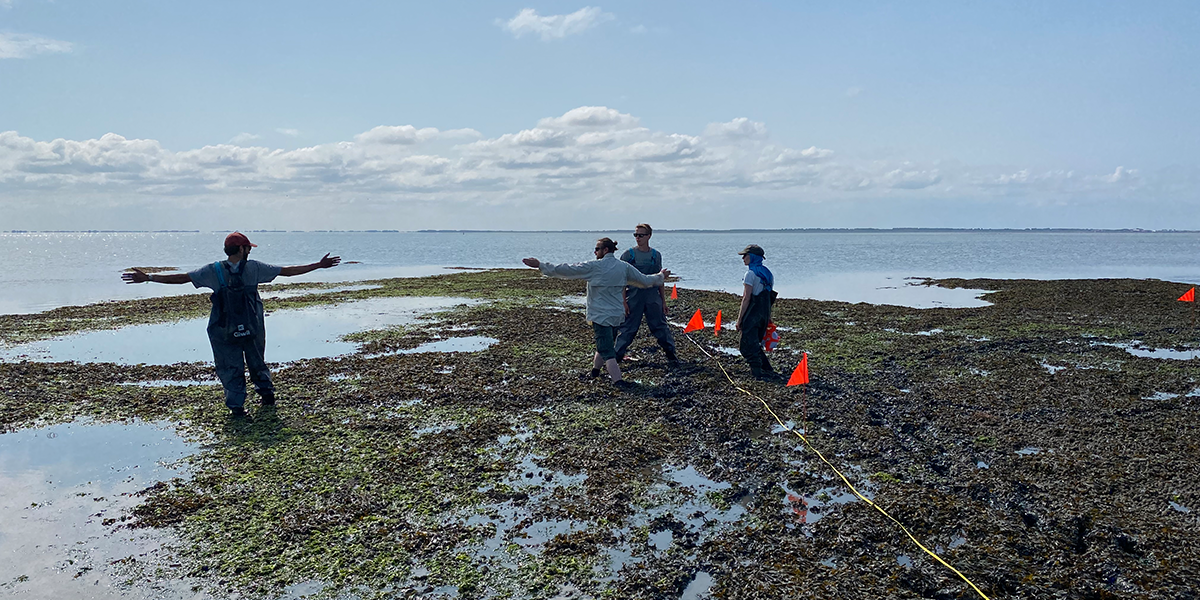
22. July 2021
We finished our last reef today. Five days, visiting five reefs. Fieldwork that is dependent on the tides is interesting, as it severely limits the accessibility of the reefs. Today, visiting the final reef was only possible late in the afternoon, where the first one we did was a morning one. It takes a bit of planning to make sure that we take advantage of the low tide as effectively as possible. Yesterday, visiting reef 539, we cut things a bit too close on the way in.
Due to the sea level still being quite high the way to the reef was extra mucky. And after three earlier reef tours we could feel the drain on our energy. This was an intense reef, with treacherous footing (sinking up to your knee in muck while your other feet lands on solid ground) and consisted of countless young mussels. Especially taking samples was a time consuming activity on this reef, as we had to separate the hundreds of tiny mussels from inanimate material. If you then add sinking away in muck with every shake of a sieve, you get a nice picture of that particular reef. Our early passage to the reef turned out to be a blessing in disguise, as we could easily return to shore while the tide was still very low.
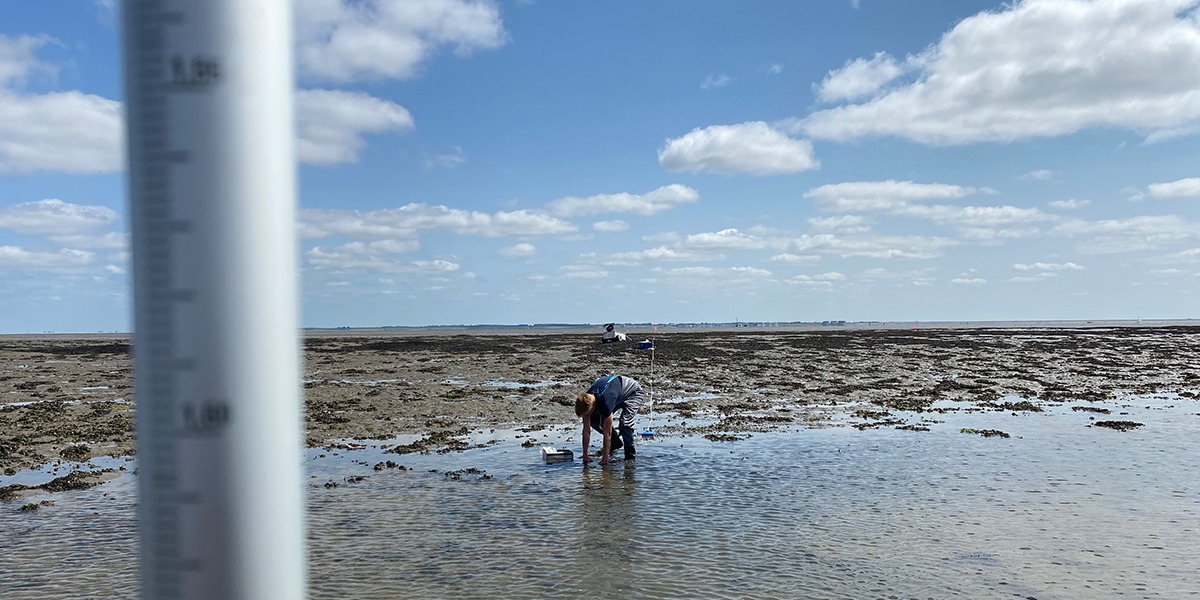
Do androids dream of electric reefs?
Working so intensely on the Wad has an effect on you. You spend your days on uneven surfaces, wearing waders, with the wind and sun buffeting you without any shelter. You quickly get used to a lot of this though, it is even very enjoyable! But the intense focus on the work on the reefs does mean that it slips into your dreams, your conversations and your routine activities.
There are famous examples of cultures that use a multitude of different terms for things like snow or grass. In those cultures it is possible to express a lot more nuance when talking about these topics, as it often plays a central role in their daily lives (Eskimo-Eleut, for example, a language spoken by some of the Inuit, is famous for having almost fifty words for snow and ice). For us, spending five days on five different reefs meant we developed ways to describe the difference between a nice bit of solid oyster reef, the mucky edge of a reef, dark patches where it is always a guess whether it’s solid or sucky, different types of elevation differences and so on.
Basically, we have started to develop an internal jargon, as the current descriptions (an oyster reef or a mussel reef) fell short of our needs. We also named some of the reefs, with names ranging from simple ones like the Easy Reef (555), Second Reef (534) to the more image-evoking Judas Reef (539) and Rotten to the Core Reef (580).
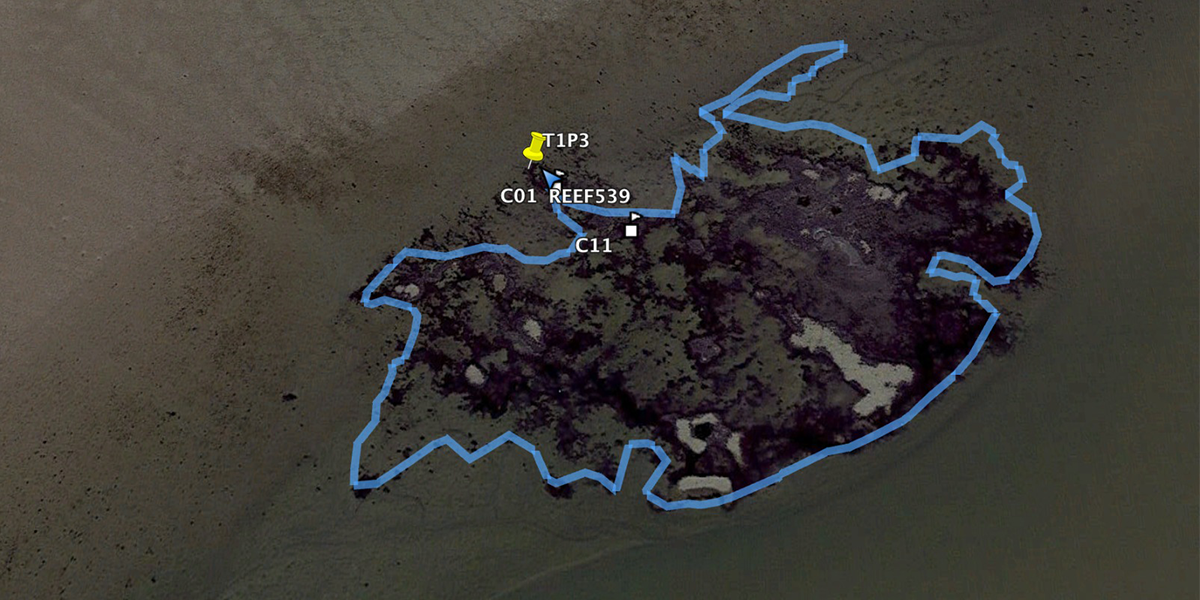
Reef talk
What I had not taken into account when leaving for this trip was how often doing research is only part of the job description. Whenever we were near any group of people, chances were that one or more would walk up to us to ask what we were doing. It is delightful to see how interested people are in the work that NIOZ (and all the partners participating in the Wadden Mosaic project) are doing on the Waddensea. From young children that are fascinated by the practical stuff (‘Wow, those waders look cool!’) to people concerned about climate change and its effect on the Wadden. It is important to be able to tell our story to all of these different audiences and it showed me that the job of communicating about NIOZ and its researchers does not stop at having a well-crafted website or catchy social media (it helps though!). All in all, I would not hesitate about going out into the field again, even if it was just to be able to answer questions and spark interest.
By the way, the last reef, Reef 542, was a delight. A fair size, decent amount of muck and, as Jon Dickson said, when pressed for a comment on the last reef: ‘it “sucked”’.
